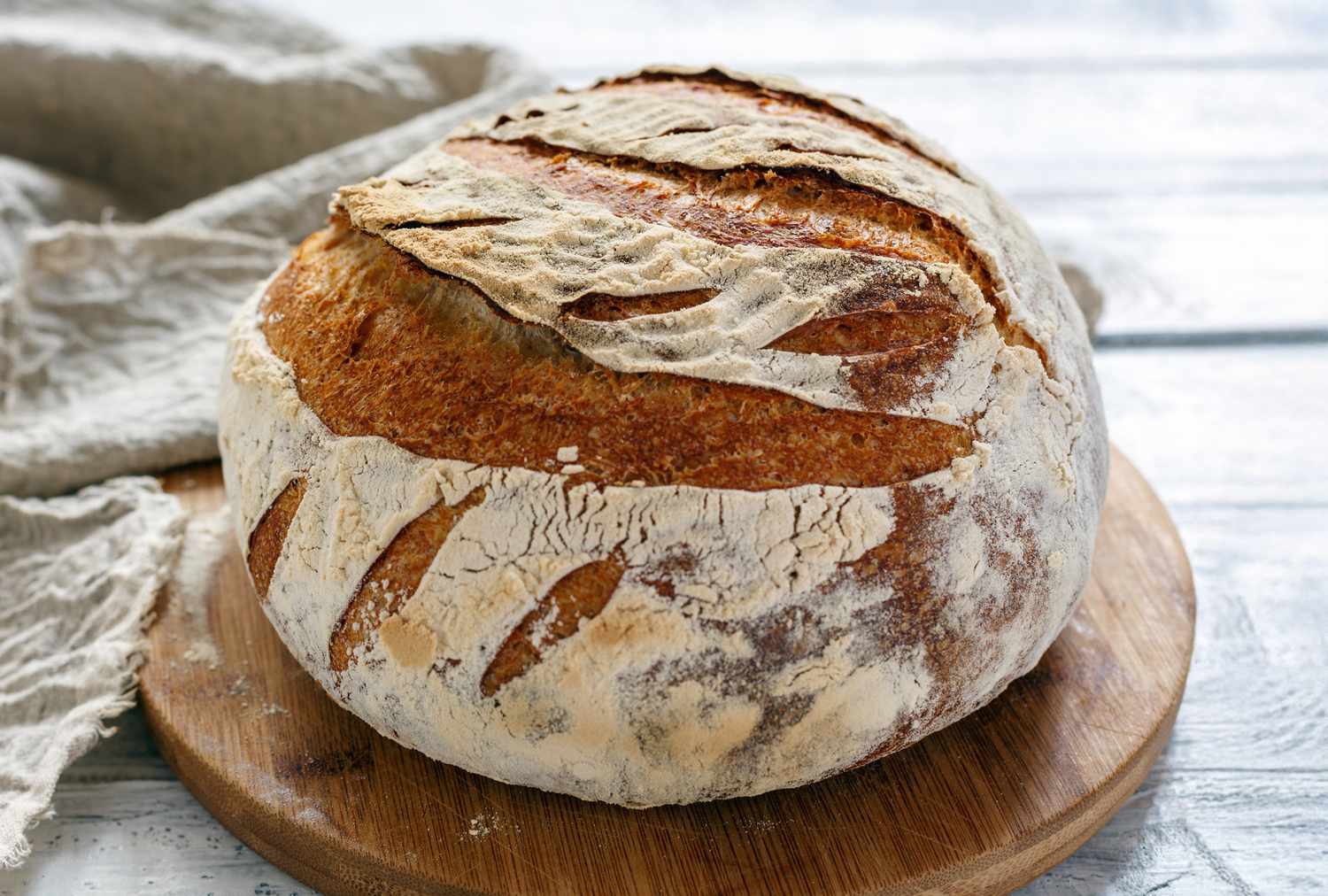Key Points
Sourdough bread isn’t naturally gluten-free because traditional recipes use wheat, rye, or barley flours that still contain gluten.Fermentation makes sourdough easier to digest and lower on the glycemic index, but it doesn’t remove gluten completely.Only sourdough made with certified gluten-free grains—like quinoa, millet, or buckwheat—and without cross-contamination is truly gluten-free.
Baking bread, particularly sourdough bread, which mushroomed into a popular pastime during the pandemic, is back big time. Everyone’s favorite carb is filling restaurant bread baskets and social media feeds—plus, it’s become a passion project for ardent bread baker, Taylor Swift. While promoting her latest album, The Life of a Showgirl, she shared her hobby with many radio and talk show hosts, remarking that even her friends who are gluten-free can enjoy her sourdough bread.
That morsel of misinformation has been ping-ponging around the internet for days since, leaving some bread lovers mighty confused. We talked to experts to find out if sourdough bread is actually gluten-free.
Lauren Manaker, MS, RDN, LD, CLEC, and registered dietitian at Nutrition Now Counseling
John “Wesley” McWhorter, DrPH, MS, RD, LD, CSCS, and spokesperson for the Academy of Nutrition and Dietetics
Anne Quatrano, chef/owner of Atlanta’s Bacchanalia restaurant, Star Provisions Market and Cafe, and Summerland Farm in Cartersville, Ga.
Fact or Folklore?
Is sourdough gluten-free? “Traditional sourdough, made with wheat, rye, or barley, still contains gluten,” says John “Wesley” McWhorter, DrPH, MS, RD, LD, CSCS, and spokesperson for the Academy of Nutrition and Dietetics. “Gluten-free sourdough exists, but that’s a different product.”
Sourdough Explained
Combining flour, water, and salt, sourdough doesn’t use commercial yeast. Instead, it’s leavened and rises thanks to a sourdough starter, a live, fermented culture of flour and water that captures wild yeast and lactic acid bacteria from the environment.
Bubbles in the dough are a clear indication that the fermentation is alive and kicking. “Although the fermentation process breaks down gluten proteins to smaller molecules, it does not eliminate gluten,” explains Anne Quatrano, chef/owner of Atlanta’s Bacchanalia restaurant and Star Provisions Market and Cafe. Sourdough is one of scores of breads baked daily at Star Provisions. “We like a 48-hour fermentation with our sourdoughs,” she says.
Digestive Benefits of Sourdough
That slow development results in bread with a distinctive tangy flavor and chewy crust, which is gentler on the tummy. “This process can make the gluten and other components of the bread easier to digest for some people without celiac disease or severe gluten sensitivity,” says Lauren Manaker, MS, RDN, LD, CLEC, registered dietitian at Nutrition Now Counseling.
“The slow fermentation process in sourdough encourages the growth of beneficial bacteria and natural acids, which can help break down FODMAPs, or carbohydrates that can be difficult for some people to digest,” Manaker adds. This is why sourdough may be a better option for people with mild digestive sensitivities, she says.
Fermentation can also lower the glycemic response, McWhorter says. “But it isn’t a probiotic like yogurt—baking kills those live cultures,” he explains.
Do Organic Ingredients Make a Difference?
When shopping for flour, you’ll find the shelves packed with organic flour, including varieties made with heritage grains (and without bleach, bromate, or herbicides like glyphosate), which may be better for the planet. “I do feel that we are all healthier when avoiding preservatives, synthetic chemicals, and grain that is genetically modified and treated with pesticides, herbicides, and chemical fertilizers,” Quatrano says.
Nevertheless, unless specified, these flours also don’t check the gluten-free box. “While organic, chemical-free heritage grains may appeal to those seeking minimally processed options, it’s important to note that they still contain gluten,” Manaker says.
Soft vs. Hard Wheat
For some bread fans, the loaves in Europe may also seem more agreeable to digestive systems. Soft wheats, more common in Europe, have lower protein content than the hard wheats typically used in the United States, which can alter the texture and digestibility, McWhorter says. “But they still contain gluten, and the bigger difference in Europe often comes from overall milling and fermentation practices, not a lack of gluten,” he notes.
These grains are not a safer or more digestible choice, as even small amounts of gluten can trigger an autoimmune response, organic or otherwise, Manaker notes. That could mean an inflammatory reaction in the small intestine and symptoms such as abdominal pain, bloating, or nausea. “For people with celiac disease or gluten intolerance, traditional sourdough is still off-limits,” McWhorter emphasizes.
How to Make Sure Your Sourdough Is Gluten-Free
On the other hand, when the ingredients used to make your dough are, in fact, gluten-free, that’s a different story. “Sourdough may be easier to digest and lower on the glycemic index, but it’s not gluten-free unless made with gluten-free flours,” McWhorter says.
The process begins, of course, with the sourdough starter. “Gluten-free starters will ferment like traditional starters, and if using gluten-free flour and yeast to make the bread, then yes, it would be gluten-free,” Quatrano adds.
For anyone with celiac disease or gluten sensitivity, Manaker says, gluten-free grains like quinoa, millet, or buckwheat are excellent alternatives. If made with these ingredients, it can only be deemed gluten-free as long as there’s no cross-contamination during preparation, points out Manaker.

